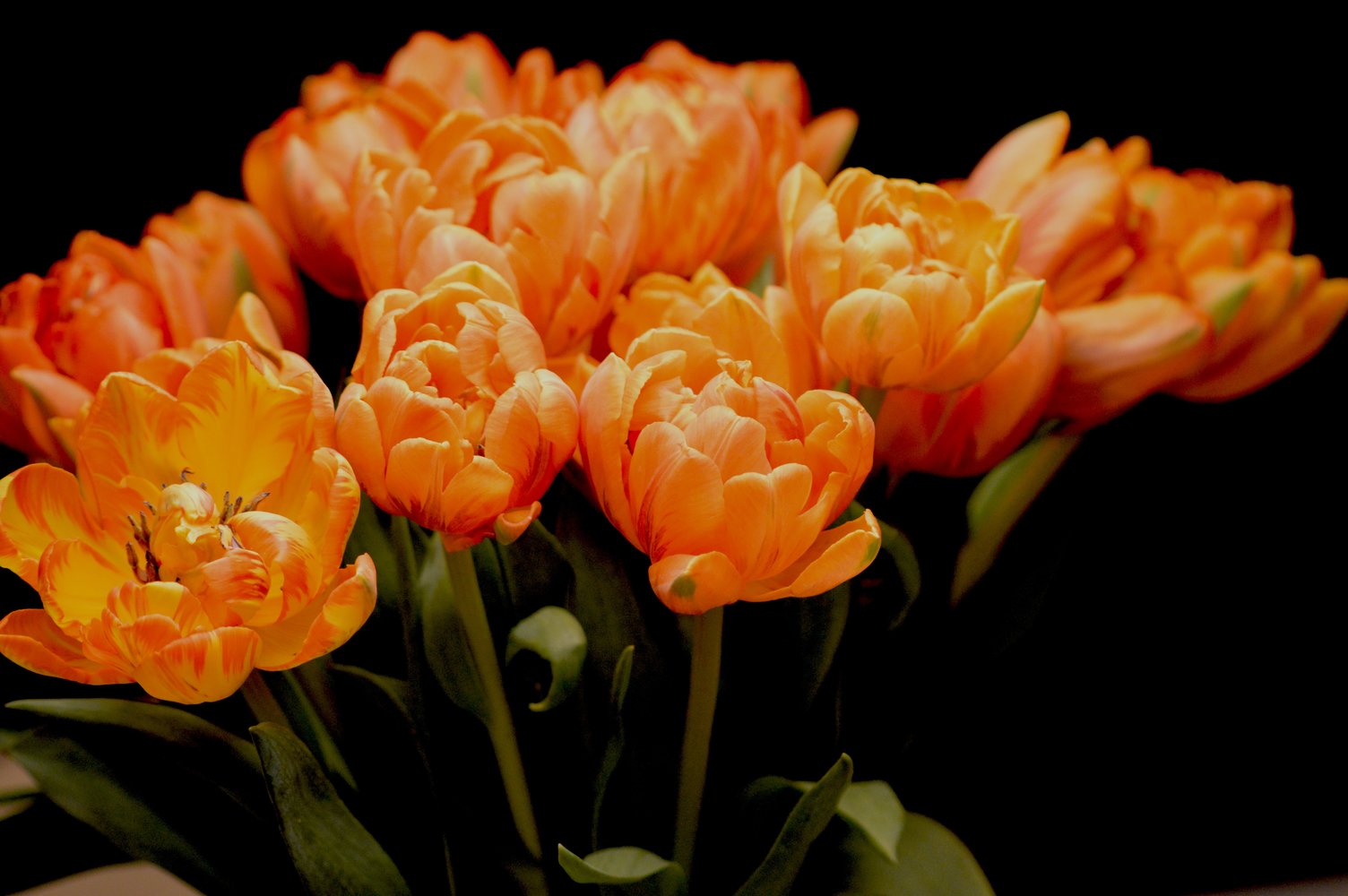30 May 2018
The Haphazard Gardener - A Joyful Reunion
This year I feel as if beloved spring, having deserted us, suddenly had a change of heart and flew North to fling itself into our arms. Oh, the joy! Within a week my tulips have gone from sullenly peeping the tips of their leaves through the sodden earth, to stretching themselves as close to the sun as they can - almost as if they are standing on their tiptoes.
One friend who has a cutting garden (*green with envy*) says she has had to search out her tallest vases to do her tulips justice this year. I just hope the sudden growth surge hasn’t meant they have over-extended themselves. One day I will have enough tulips in my garden to feel I can bring some indoors, but for now I have to enjoy them in situ. Two of my favourites are ‘Ballerina’ and ‘Bruine Wimpel’. They come back every year, (so far, touch wood), and keep their shape and gorgeous colours for a long time unlike some varieties that are prone to fading or being mugged and left in tatters by April showers and winds.
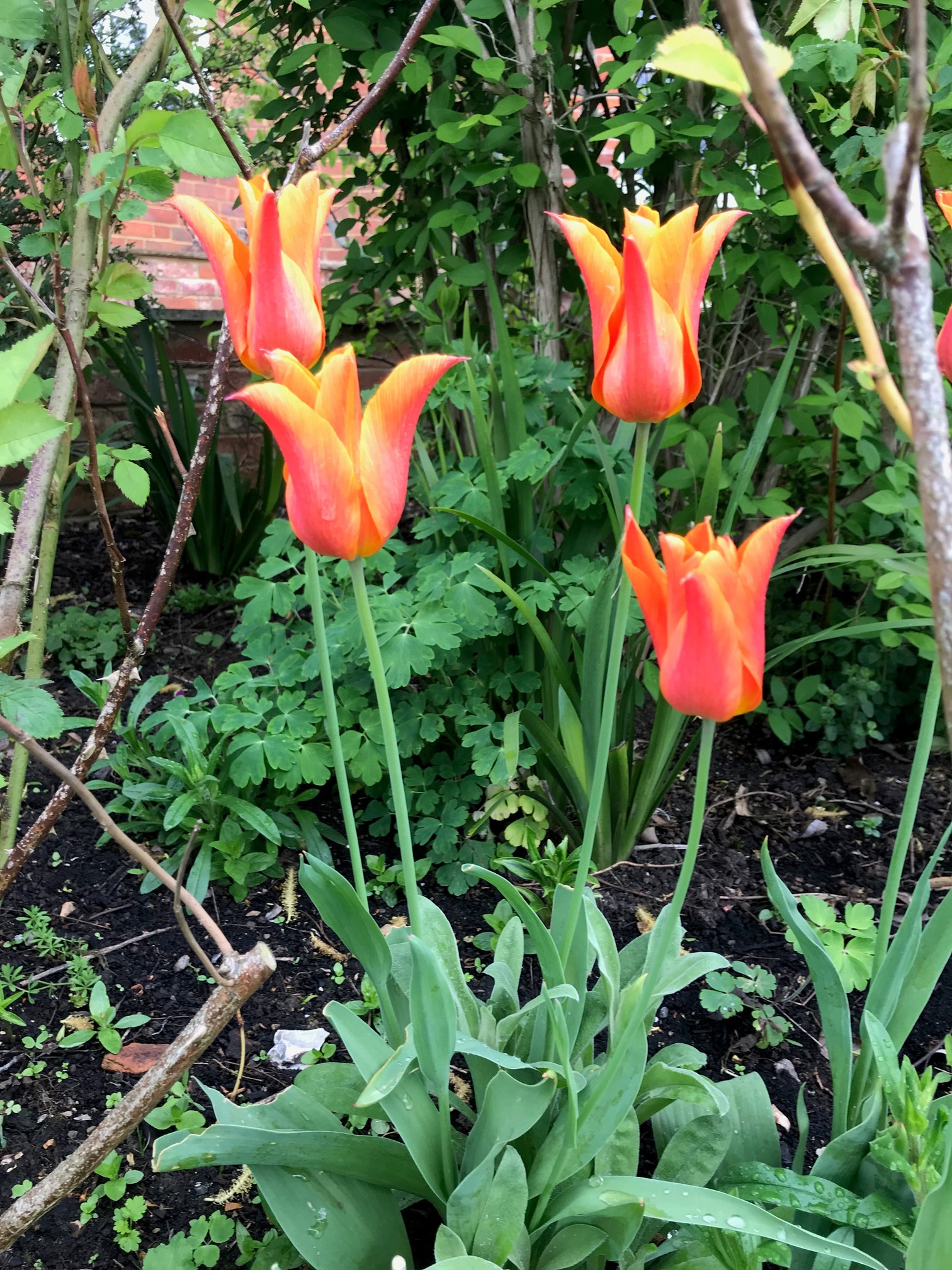
Tulipa ‘Ballerina’ and Tulipa ‘Bruine Wimpel’
The froth of blossom that erupted last week has got the bees in a frenzy. Cherry blossom and crabapples are decked in their finest and beckoning seductively through confetti of petals. My heart never fails to be lifted by the neon shade of purple and the intoxicating scent of a neighbour’s lilac in Southgate Grove. There was a lilac tree outside my bedroom window when I was a child, so that perfume on a warm breeze never fails to transport me.
Then there are the bluebells exploding in the woods - it seems to me to be a rare thing to have the woods full of bluebells at the same time as the cherry blossom; is this because of the Beast from the East and all the mad weather this year?
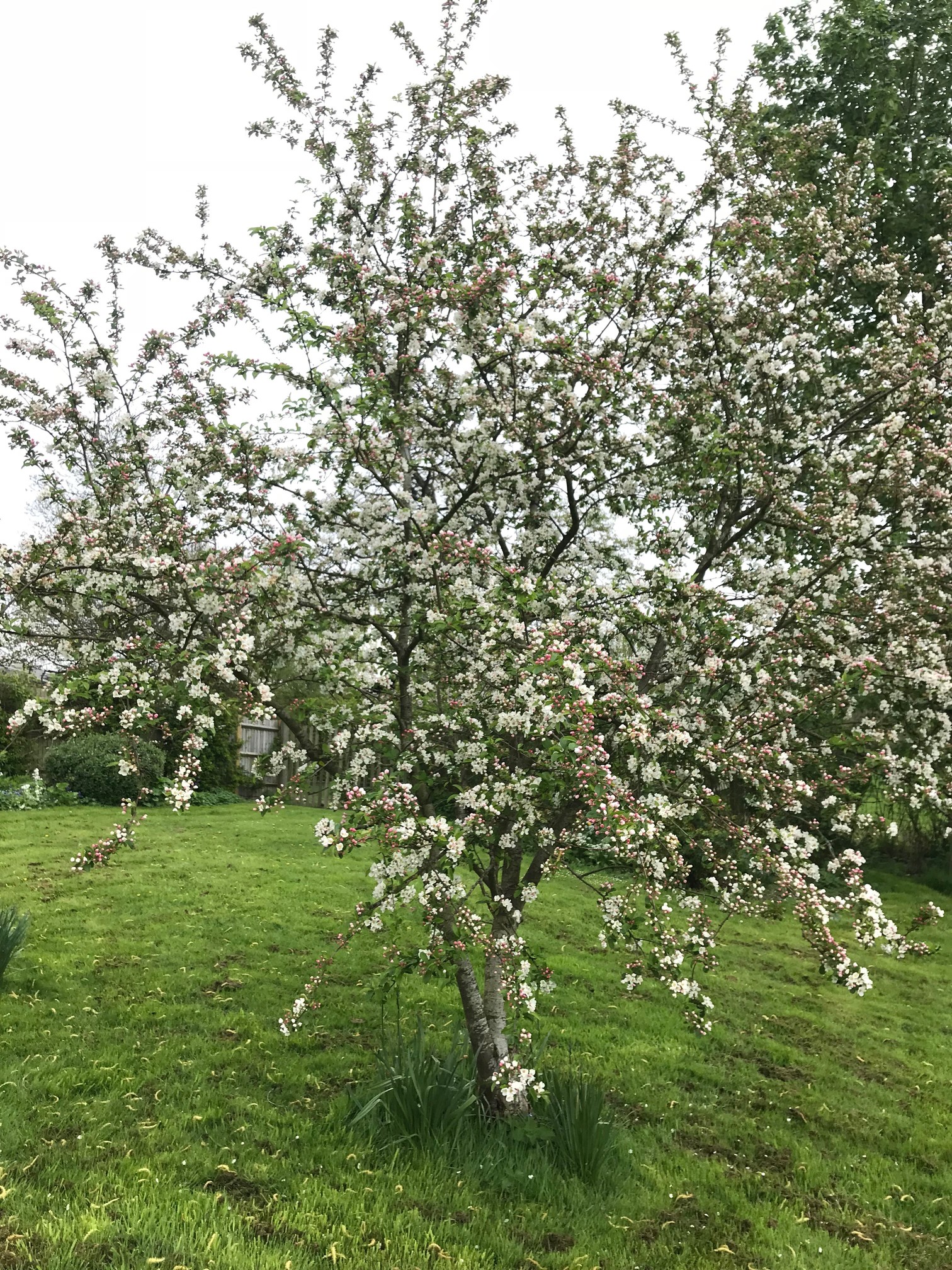
Madly flowering crabapple - unidentified Malus
I did a first cut of the lawn last Sunday, with the mower on a high setting, and by Wednesday it looked to me as though it needed another go. This is the time of year to throw a bit of grass seed down on any bare patches, perhaps with a piece of netting pegged over it to stop the traffic of people, animals and birds until it establishes itself.

Buzz being very good and not walking on netted grass seed
Lots of De Beauvoir gardens are plagued by borage (starflower or Borago officials) that shows itself everywhere. Bees love it and it has lots of culinary uses, but it can be a bit of a thug. When it starts overtaking your borders and lawn, digging it out is the best bet, but regular mowing will also help to keep it at bay if it’s creeping into your lawn from the borders. Bear in mind that once established, it can put down a deep taproot and be difficult to eradicate, so this time of year is a good time to tackle it.
The leaves are covered with tiny hairs that can be a skin irritant so wear gloves if you are going to try and dig it out. The leaves taste of cucumber and when they are young they can be finely chopped added to Pimms or other drinks and to salads, along with the flowers.
Nicholas Culpepper, the 17th Century herbalist wrote: “The leaves, flowers and seeds are good to expel melancholy and pensiveness” and the Romans infused the leaves in wine to relieve depression and improve the mood, (you could try just the wine…); however, it contains harmful alkaloids, so should only be taken in concentrated doses (medicinally) on the advice of a herbalist.
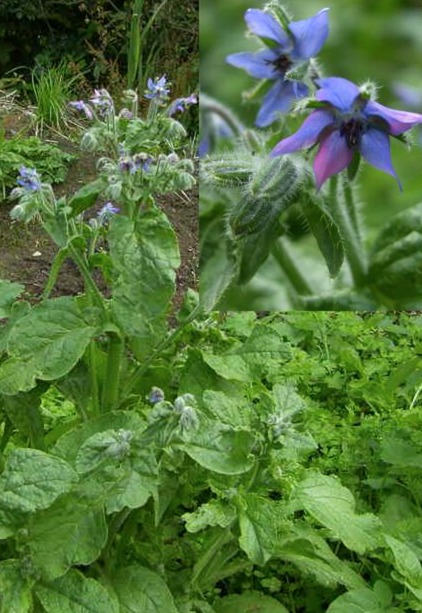
Borage
The other pest common to De Beauvoir (and most other) gardens is bindweed. It spreads by underground creeping roots which produce top-growth at intervals. If left to its own devices, it will eventually twine its way through all of the plants in a border.
I find a perverse pleasure in pursuing it through one of my flowerbeds where it has established itself and has given myself tendonitis as a result of my relentless sport. My favoured method is to slip a fork in the soil next to where I have spotted a new shoot poking through. Then I gently leverage a bit of soil up to expose the depth and direction the roots go in, lifting and teasing out as much of the roots as I can, working my way through the border.
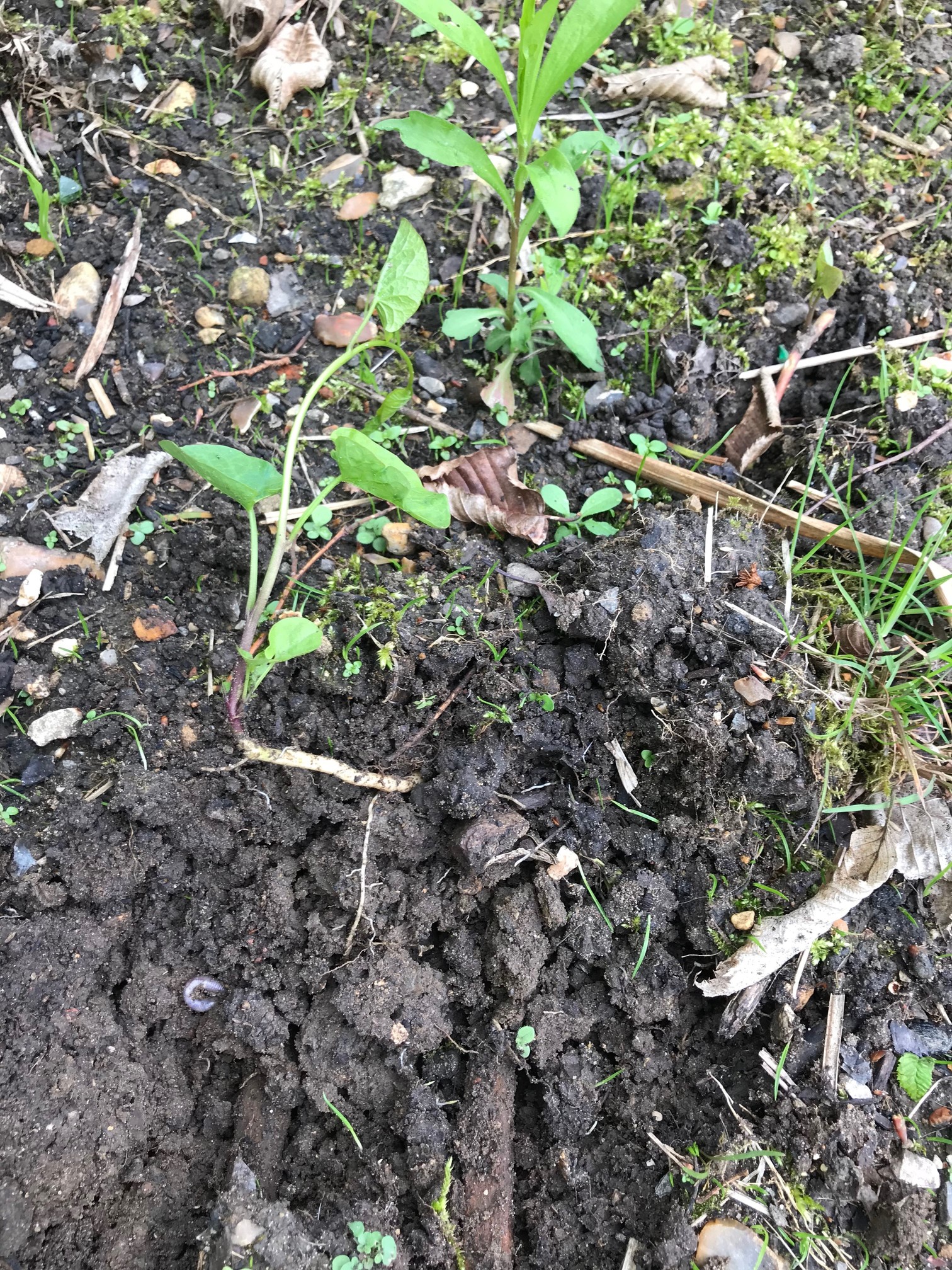
Bindweed and it’s creeping root
This is a good time of year to tackle it, as in spring most plants it has infested will tolerate being lifted with a couple of forks. Then you can tease the bindweed out of its roots and re-plant it, making sure not to leave any small pieces of root behind, as it can re-grow from the smallest remnant.
The other way to eradicate it is to treat it with a weed killer like Glyphosate. Again, spring is the best time; keep an eye open for the emerging shoots and then apply it to the new leaves, either by spraying - taking care not to let any spray drift onto plants you want to keep! Sometimes I make a funnel out of a plastic drink bottle and use it to direct the spray and protect the surrounding plants.
Another method is to wear a woolen or cotton glove soaked in weed killer over a rubber one and grasp each weedling, clutching along the length of it to cover it in the herbicide. There is a thought that lightly crushing the leaves may help with the uptake.
As I finish, I am sitting with an electric heater on full blast under my desk, huddled in two jumpers. I am hoping that spring, so joyfully welcomed last weekend, will not prove to be a fickle dilly-dallier, only toying with our affections…
